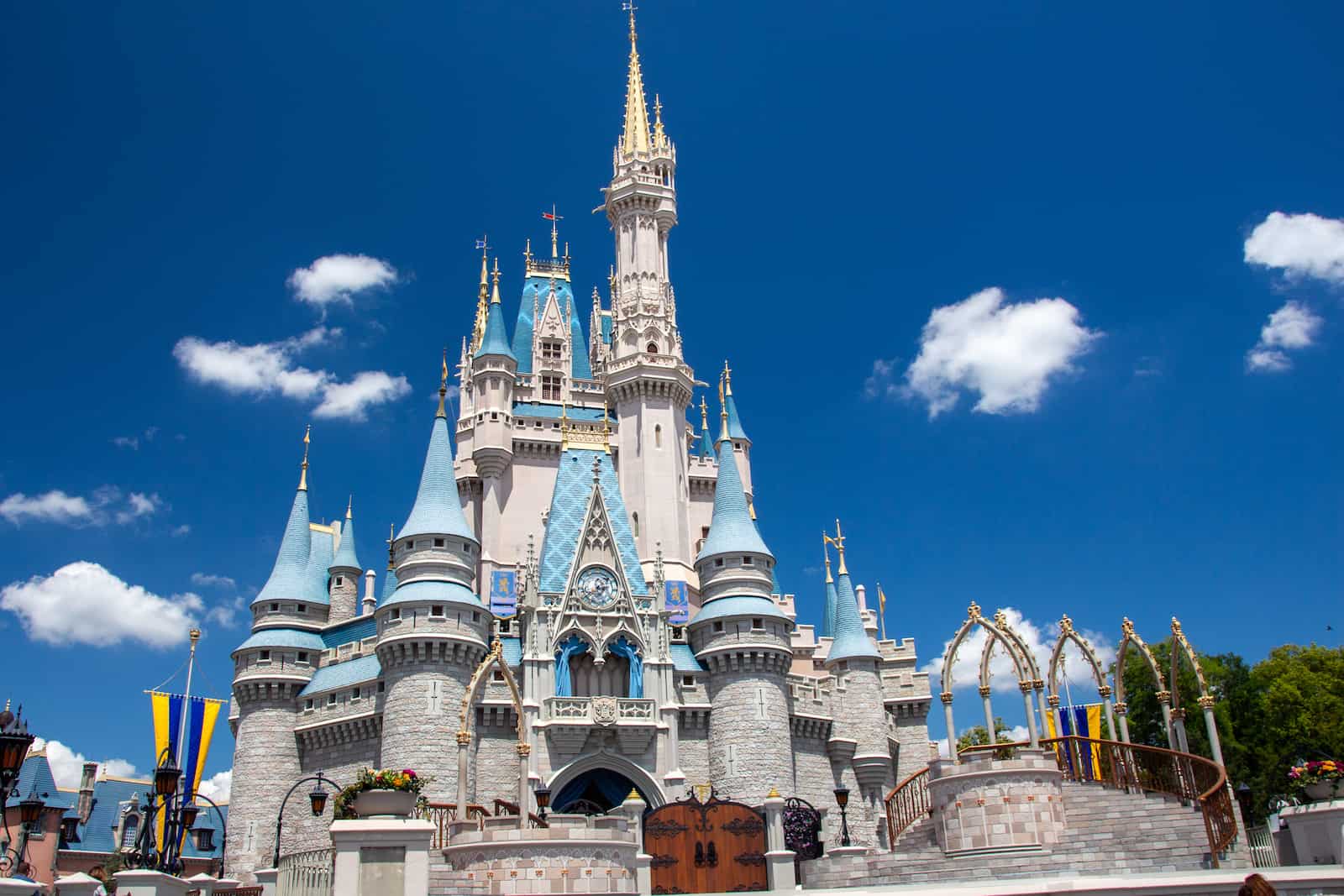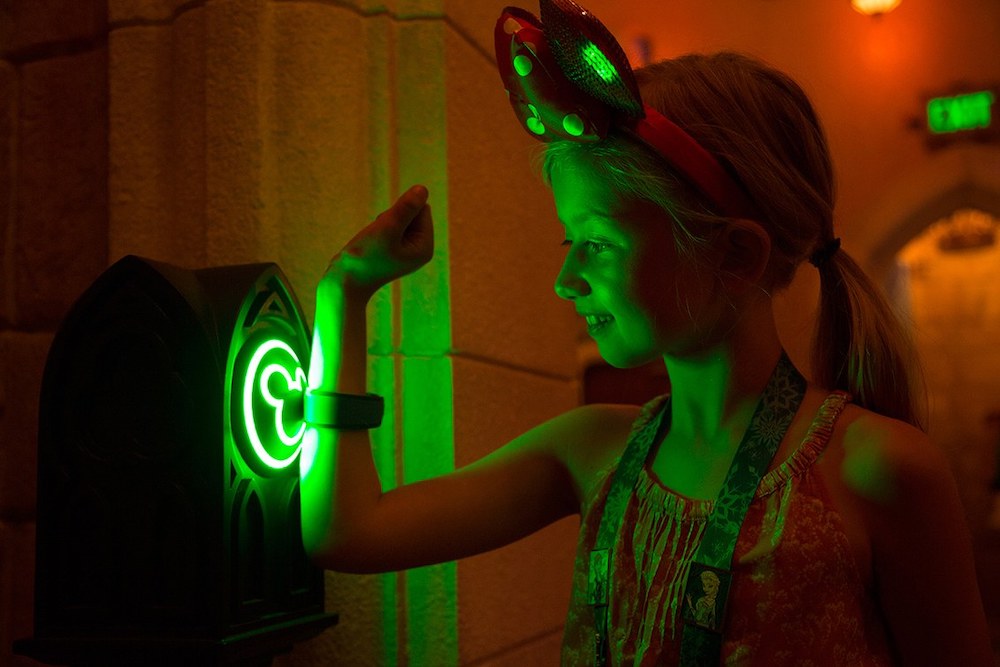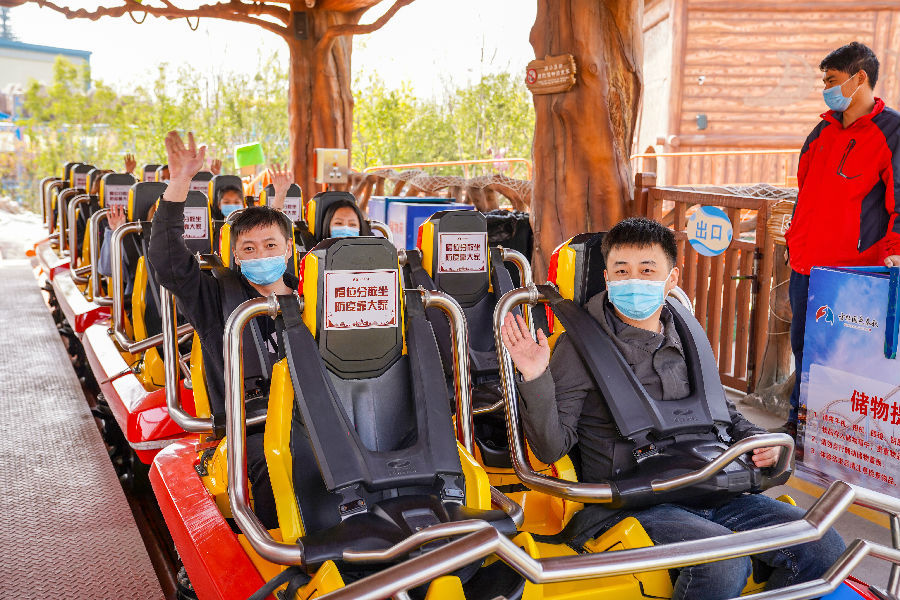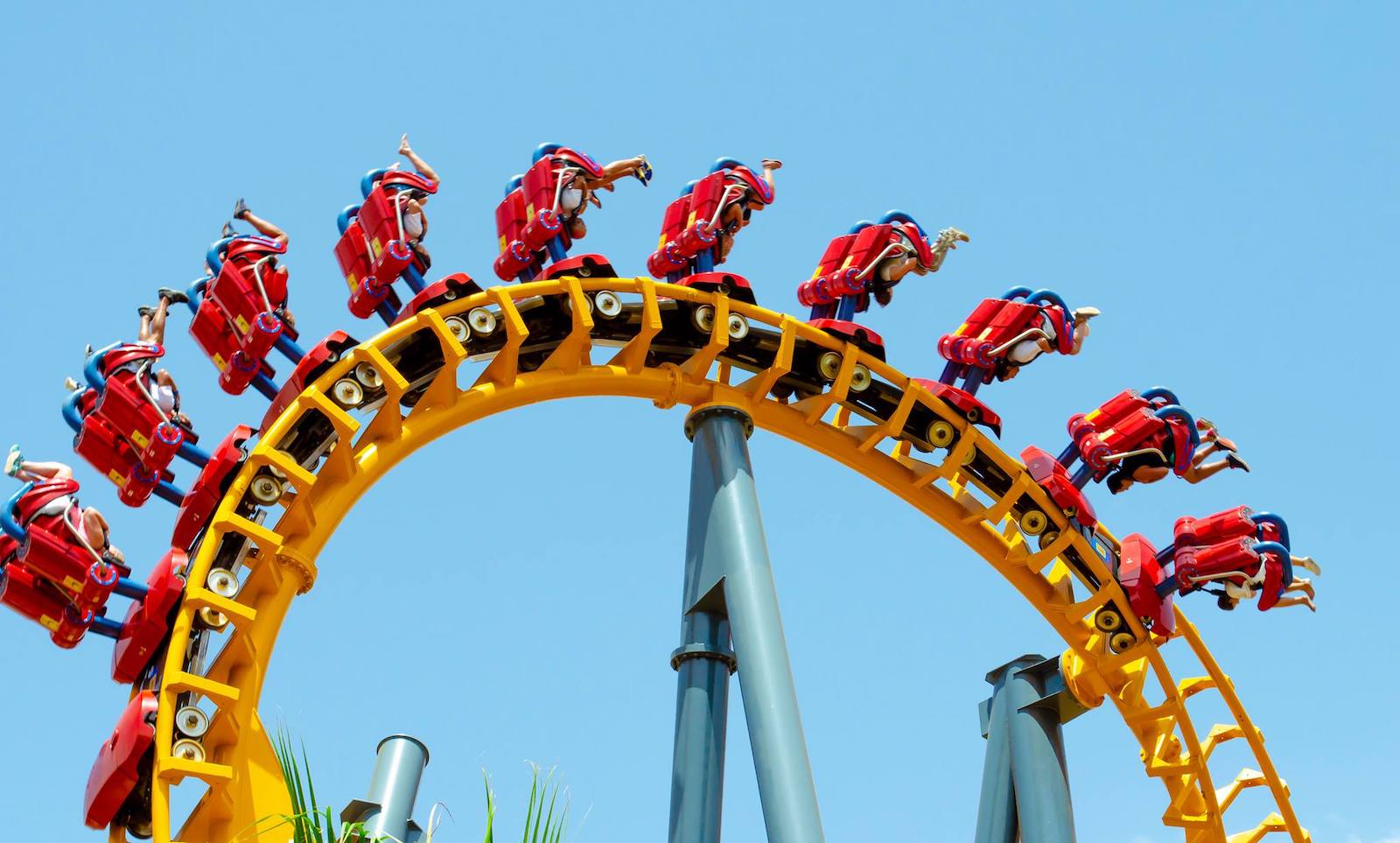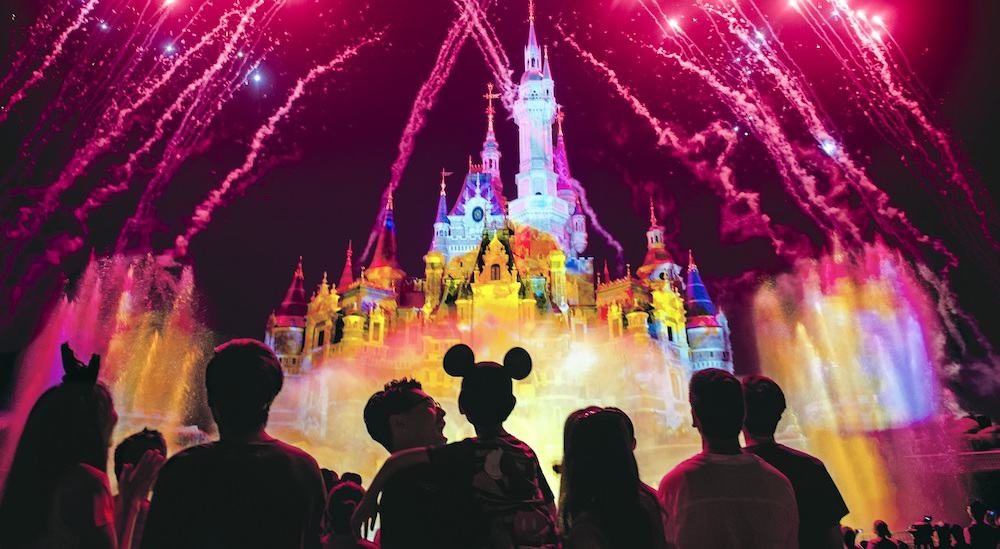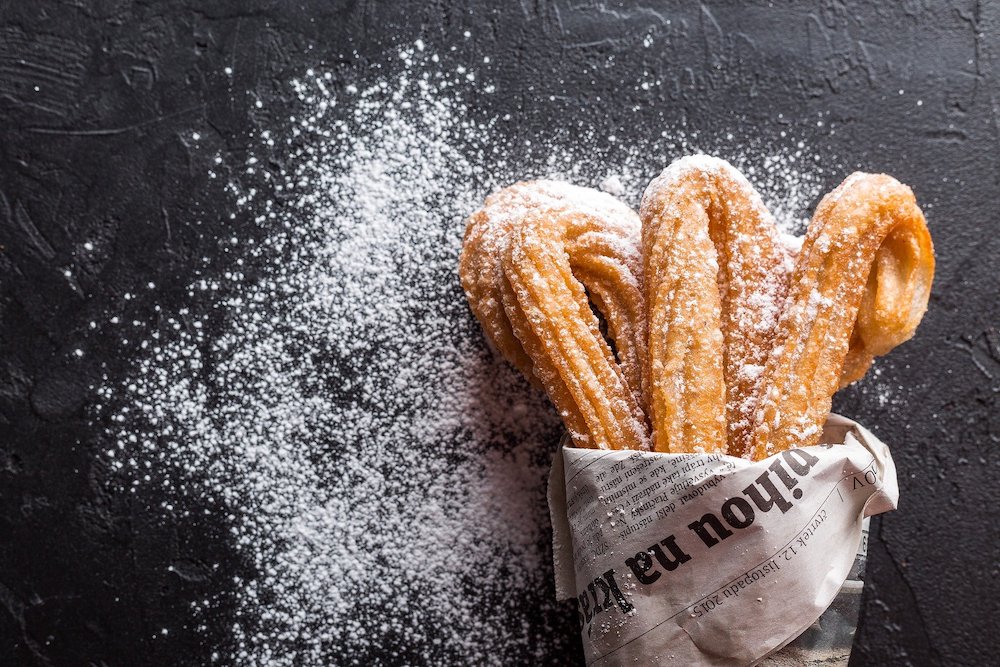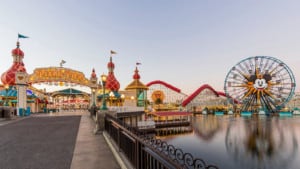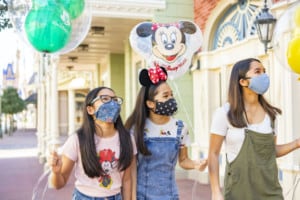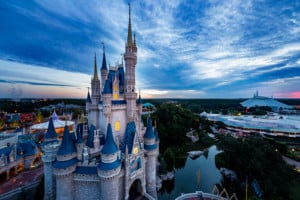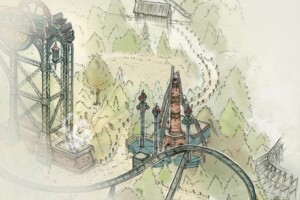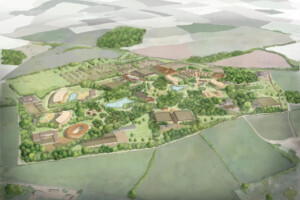These range from reduced attendance to newly-instituted safety measures and increased social distancing.
Changes at Asian theme parks will likely serve as a guide for the US as Disney, Universal, Six Flags, Cedar Fair, SeaWorld, Busch Gardens and Legoland begin reopening their gates following the COVID-19 pandemic.
Let’s take a closer look at 9 changes we may see at US theme parks when they reopen after the coronavirus outbreak.
1) Phased reopening
In the US, Disney announced the closure of its theme parks first, followed by hotels and then outdoor shopping and dining areas. Expect Disney‘s US operations to come back online in the opposite direction. Shopping and dining first, then hotels and finally theme parks.
Shanghai Disneyland was the first Disney resort to close due to the COVID-19 pandemic. It is also the first of Disney’s six worldwide resorts to begin reopening. The phased reopening has begun with shopping and dining in the hotels and the Disneytown mall adjacent to the theme park.
The Shanghai Disneyland Hotel has reopened with limited capacity, whereas The Toy Story Hotel is not accepting reservations until mid-May. The Shanghai Disneyland theme park has not reopened yet.
Looking at the changes likely after COVID-19, Screamscape’s Lance Hart expects the four theme parks at the Walt Disney World resort to open in stages.
“It would be easy to see WDW attempt to reopen Magic Kingdom first along with Disney Hollywood Studios at the same time or shortly after,” according to Screamscape.
“Reopening Disney’s Animal Kingdom would likely follow as the park would have been staffed non-stop anyway with the various animal care members. Of all the parks, Epcot would likely be the last park to reopen if Disney were to do this in phases.”
Parks need to be thoroughly cleaned and completely restocked before reopening. Rides need to undergo maintenance checks. Staff would need also to be retrained on new protocols.
2) Health and safety measures
This will be one of the major changes at US theme parks after COVID-19. Security checkpoints will need to add a series of health and safety checks for theme park visitors.
Temperature checks will likely join metal detectors and bag inspections. Disney executive chairman Bob Iger said the company’s U.S. theme parks could institute temperature screenings at security checkpoints in order to meet health guidelines and make visitors feel safe.
Some parks may also require visitors and employees to wear masks
Disney’s cruise ships began instituting temperature checks of passengers prior to the coronavirus suspension of departures.
Some parks may also require visitors and employees to wear masks. Others may recommend masks or make them optional. The Shanghai Disney resort requires visitors to wear masks during the entire visit, except while dining.
Social distancing will become the norm at theme parks. At least for the immediate future. China’s Shanghai Happy Valley has posted signs every 1.5 meters in waiting areas to ensure social distancing. Happy Valley employees help guide visitors and maintain orderly queues.
Shanghai Disney resort now requires visitors to present their QR health code in addition to undergoing temperature screenings, wearing masks and maintaining social distancing. Google and Apple are working on a contact tracing system for the U.S. that would be similar to China’s QR-based health code system.
3) Virtual ticketing and payments
Anything that creates a queue will be discouraged — including ticket booths. Some Chinese theme parks require visitors to use mobile and online payment options for tickets. Cashless payments are also required for shopping purchases and dining tabs to allow for non-contact service.
Another change will be the reduction of touchpoints at theme parks after COVID-19. That means that fingerprint scans at the entrances to Disney World parks could be suspended. The fingerprint scanning machines are intended to discourage and reduce ticket fraud. Disney’s California parks don’t use the scanners, opting instead to take digital photos of visitors.
4) Reduced theme park attendance
Theme parks at the Disney World and Disneyland resorts typically only hit maximum attendance around the Christmas and New Years winter holiday season.
Safety concerns by visitors could naturally limit attendance once theme parks reopen. Local governments could force parks to put a cap on daily visitors before slowly ramping up attendance.
These changes have already been seen in Asian theme parks due to COVID-19. For example, the Taiwan government restricted theme park attendance to 50% normal capacity to prevent overcrowding and allow for social distancing. Taiwanese theme parks can only use half their parking spaces. Additional visitors are allowed to enter once parking spaces become available.
Dutch theme parks plan to significantly lower attendance and only allow pre-booked visits, according to Loopings. Fantawild parks in China are limiting attendance to 50% of normal levels to prevent crowding and allow for social distancing.
5) Virtual queues
Virtual queues help reduce lines and control crowding — two key theme park goals in the post-COVID-19 world.
Disney has successfully used virtual queues for the Rise of the Resistance attractions at Disney’s Hollywood Studios and Disneyland. The Batuu West version of Star Wars: Galaxy’s Edge briefly had a virtual queue for the entire land.
Disney could roll out virtual queues for more attractions
Disney could roll out virtual queues for more attractions. New “Virtual Queues” sections have been added to the Disneyland and Disney World mobile apps while parks remain shuttered during the coronavirus outbreak. Disney has yet to make an official announcement about expanding the use of virtual queues in its theme parks.
Shanghai Happy Valley is using 16 machines throughout the park to allow visitors to queue up virtually and avoid long attraction lines, according to the Jakarta Post.
Attractions could reduce or repurpose preshows in the post-COVID-19 era. Preshows on the Haunted Mansion and Millennium Falcon: Smugglers Run help set up the backstory of the attractions. The Rise of the Resistance and Soarin’ attractions use preshows to break riders into smaller groups and explain safety rules.
One change we may see is that theme parks may have to sacrifice some storytelling to ensure social distancing post-COVID-19. Preshow rooms could help to reduce crowding in queues and space out riders waiting in lines.
6) Reduced capacity
Lowering attendance will allow theme parks to reduce capacity on attractions. Jamming a maximum number of riders onto an attraction will become a thing of the past. At least, for the near future. Instead, ride operators will focus on limiting the number of riders to enforce social distancing.
This change is already in evidence at Shanghai Happy Valley theme park which is operating rides and attractions at 40 per cent capacity to enforce strict social distancing rules due to coronavirus. Toshimaen amusement park in Tokyo is also loading every other row on some rides to space visitors as a precaution.
7) Ride safety
Keeping rides and attractions clean during the post-COVID-19 era will be one of the biggest challenges for theme parks, leading to some changes in routine.
Universal Studios Singapore was disinfecting seats and restraints after every ride cycle before the park closed due to the coronavirus outbreak. Theme parks will also step up their already extensive overnight deep cleaning procedures.
Dutch theme parks are studying the safest way for employees to inspect lap bars and safety restraints while keeping their distance from visitors, according to Looping Group. One option: Providing employees with personal protective equipment similar to what doctors, nurses and paramedics wear.
The various safety measures are likely to significantly reduce rider throughput and attraction dispatch times.
8) Suspend shows
Any theme park activity that draws large crowds will have to be suspended or severely modified. That includes parades, fireworks shows and theatrical productions.
Since reopening, Legoland Japan has continued to keep closed all shows and rides in confined spaces.
Ocean Park in Shanghai is operating indoor attractions at 30% capacity to ensure social distancing. Indoor venues at Ocean Park leave every other row empty and keep three to four seats empty between groups.
Universal Studios Singapore closed indoor and outdoor theatre-style shows before the park shut its doors due to the COVID-19 pandemic.
Tokyo’s Toshimaen kept indoor attractions like its haunted house closed after partially resuming operations.
9) Restaurant regulations
Government restrictions required many restaurants across the United States to reduce seating capacity prior to closing due to the COVID-19 pandemic. Since then, many dining rooms have closed and restaurants have switched to takeout, delivery and curbside pickup.
Expect restaurants at theme parks to employ the same changed seating capacity approach once the gates reopen following the coronavirus outbreak. China’s Fantawild parks use disposable utensils and require visitors to dine at a distance from others.
Disney parks positioned hand sanitizing stations at the entrance of every restaurant prior to the coronavirus closures. Sanitation reminders will likely be ubiquitous at theme parks when they reopen.
Reopening restaurants in California must reduce seating capacity by 50% to increase physical distancing. Servers will wear masks and gloves. Disposable menus will be tossed away after a single-use. Customers will have their temperatures checked before entering the restaurant. It is likely that the new restaurant regulations will also apply to theme parks in the state.
Background image kind courtesy of Cedar Fair



